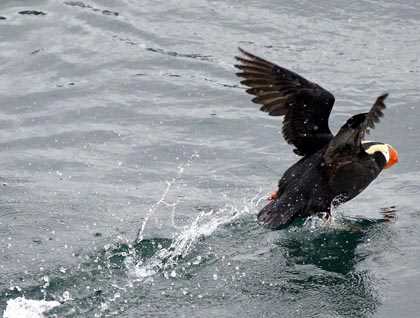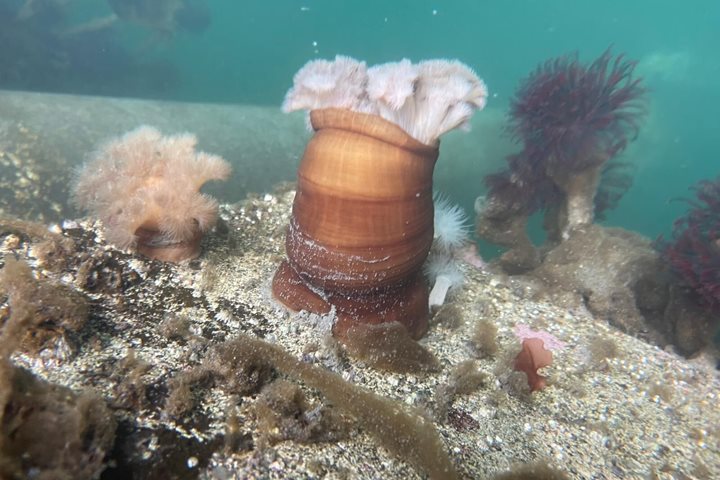Before dawn this morning National Geographic Sea Lion made a quiet approach to the official dock of Glacier Bay National Park. Just after sunrise our park ranger and Tlingit elder boarded Sea Lion and slowly and quietly our ship made her way into Tarr Inlet where we would be spending the entire day cruising north and then south. The early light of the day was lovely, though, to the west, a soft grey cloud cover was caught on the Fairweather Range and was threatening to move in and over Glacier Bay National Park. This park, comprised of 3.3 million acres of mountains, glaciers, forests and waterways, is a highlight of any visit to Southeast Alaska and also part of a 25-million-acre World Heritage Site...one of the world’s largest protected natural areas, designated by UNESCO. Glacier Bay is also a homeland, a natural lab, a wilderness that belongs to us all.
After our welcoming by park ranger Nicole Schavue and Tlingit elder Bertha Franulovich we were invited up on deck for our first stop at Marble Island a well known bird rookery and haul-out for Steller sea lions. Tufted puffins, pigeon guillemots, surf birds, kittiwakes, black oystercatchers and a lone immature bald eagle all flew in and out as National Geographic Sea Lion sat just off the eastern side of South Marble Island. Both ends of the island had sizable groups of Steller sea lions hauled out, adding to the cacophony of sounds. Continuing our northerly passage, National Geographic Sea Lion headed back out into Tarr Inlet, making way towards Tidal Inlet and Gloomy Knob. Weather had arrived and a soft mist had turned into a good early summer rain.
Rain gear on, many of us returned to the bow as we cruised slowly through a small inlet and then made a long stop at Gloomy Knob. Reports from a passing vessel let us know there was again to get her kid to higher ground. The baby goat could only make short jumps, not quite enough a brown bear at beach level ON Gloomy Knob! Just above the bear was a mountain goat mom with a brand new kid...she was cautiously watching in the direction of the bear, trying again and for the distance its mother wanted her baby to cover. Slowly, we continued our cruise, counting more than ten mountain goats feasting on the early summer vegetation on Gloomy Knob. We remained with several small groups of goats all along the face of Gloomy Knob and just before lunch resumed our passage to Margerie and Grand Pacific glaciers.
National Geographic Sea Lion arrived in the early afternoon to the end of our 60-mile journey; at the face of two glaciers. Rain continued to fall as we approached the face of Margerie Glacier. It became very apparent as we moved into a side view of Margerie that there was an enormous slab of ice angled out into Tarr Inlet...waiting for gravity, pressure, time...or maybe just the right tiny movement to begin calving. Soon small pieces of ice sprinkled the water below this craggy overhang. Then, more and more and finally in one graceful slow motion free fall, a lovely huge piece of blue ice calved into the sea. An enormous cloud of white ice and water was followed by the sound of white thunder...and then a huge wave of water moved towards National Geographic Sea Lion. Our captain pointed the ship into the wave and we road the big roller and marveled at our luck to see such a large calving; only adding to a long list of fortunate sites seen this last week.
National Geographic Sea Lion began her return journey, 60 miles to our morning starting point at Bartlett Cove. During the late afternoon Nicole, our park ranger, added to the history of this great park, while Bertha, our Tlingit elder, guest, and host made a presentation following the oral tradition of recalling her people’s history, the first peoples, the Tlingit, who called this place S’e Shuyee which means “Edge of the glacial slit.”







